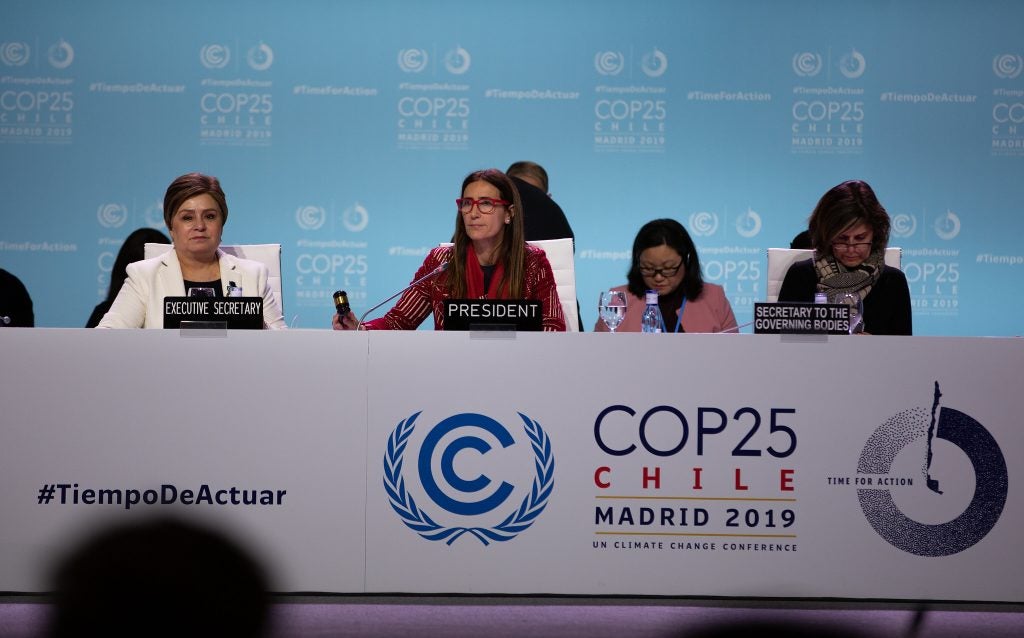
dsleeter_2000
(This post originally appeared on EDF Voices)
Five years ago, I had one of the hardest tasks in government for someone who cares about climate action: running an interagency process in the White House on addressing carbon dioxide emissions from international aviation.
To put it mildly, climate action in the aviation sector was at an impasse.
The European Union was seeking to extend its greenhouse gas emission trading system to include international flights to and from Europe. The EU was well within its legal rights, and a range of studies showed that despite significant emission reductions the costs to passengers would be slight.
But the political opposition was widespread and fierce.
India had gone ballistic at the idea. Russia threatened to deny Europe access to its airspace. China said it would cancel orders for European aircraft.
In the United States, meanwhile, not a single senator was willing to block legislation that railed against Europe’s proposal to cover American air carriers.
And yet, last week, the 191 member states of the International Civil Aviation Organization agreed to the first-ever cap on carbon pollution from a global sector, adopting by broad acclaim a market-based measure on carbon dioxide emissions from international flights.
The agreement, while not perfect, is significant – not only for the emissions reductions it promises to achieve, but also because of the circuitous journey that got us here.
Industry: We need consistency
The impetus to find a way out of the impasse came from two quarters.
The first was a business imperative. What the aviation industry feared more than anything was a patchwork of regulations – one approach in Europe, another in the U.S. and still another in China. That made the industry, a strong opponent of the EU’s plan, willing to come to the table to get a global deal.
The second was the Obama administration’s commitment to climate action. If we couldn’t overcome the widespread opposition to Europe moving ahead, could we leverage the threat of EU action to land an international agreement?
ICAO, the aviation agency of the United Nations, had already agreed in 2010 to explore policy options to achieve a global solution. So in the fall of 2011, I raised the idea of pivoting to ICAO in a conversation with Mike Froman, then the White House Deputy National Security Advisor for International Economic Affairs.
A breakthrough came the following spring, when Tony Tyler, head of the International Air Transport Association, met with Mike and made it clear that the industry would support a robust market-based measure in ICAO.
EU: Get a deal or else
That summer, U.S. Special Envoy for Climate Change Todd Stern held the first of a series of informal meetings among countries to discuss an ICAO solution.
Meanwhile, the administration worked to ensure that when the anti-E.U. legislation was passed by Congress that autumn, it directed the administration to negotiate a global approach.
Work on a global market-based approach accelerated once ICAO agreed in 2013 to develop a proposal for formal consideration.
The EU kept the pressure on by making clear that it would reinstate its coverage of international flights if ICAO failed to act.
The industry remained supportive, just as Tony Tyler had pledged back in 2012. Environmental Defense Fund and our partners in the International Coalition for Sustainable Aviation, which EDF helped to found 20 years ago, published economic and legal analyses and provided technical support to governments, including through expert participation in ICAO working groups.
My former colleagues in the Obama administration spearheaded the effort to reach an agreement and put on a full-court diplomatic press in the last few weeks to secure participation from as many countries as possible.
Nations: We’ll move if we can compromise
The global market-based measure announced in Montreal last week will reduce carbon pollution by an estimated 2.5 billion tons over the first fifteen years of the program. It signals continued momentum on climate action, and positions the aviation sector as an engine of demand for high-quality emissions reductions around the world.
To be sure, the agreement is not perfect. An ideal agreement would apply to all anticipated emissions growth, whereas the deal currently covers 76 percent – although that will rise if more nations join.
The “carbon-neutral growth” target must be strengthened over time if the aviation sector is to do its fair share to address climate change – which is why the agreement includes provisions for regular review in light of the Paris Agreement’s long-term temperature goals.
To accommodate the concerns of fast-growing emerging markets, the agreement initially ties each air carrier’s responsibility to the sector’s overall emissions growth, not just its own emissions – arguably a more equitable approach, but one that dampens incentives for within-sector emission reductions.
And the agreement sets a two-year time frame for finalizing the crucial draft rules needed to determine what types of emissions units will be eligible for use in the program and ensure that they are not “double-counted” against other compliance obligations.
Such compromises, however, were crucial to garnering the support of a huge majority of ICAO’s member nations and getting the agreement across the finish line.
A good day for the climate
Some, including a few of my colleagues in the environmental movement, focus on the deal’s shortcomings to castigate it or at least damn it with very faint praise.
But letting the perfect be the enemy of the good is a luxury the world cannot afford – least of all the people of countries on the front lines of climate change, such as Jamaica, Burkina Faso and the Marshall Islands, whose representatives helped create momentum for the deal in the final days of the negotiations by eloquently urging ICAO to act.
Back home in New York the night after the deal was announced, my daughters, 11 and 14, asked how my day had been. I had to pause and let it sink in.
“Well, we got an international agreement that we’ve been working toward for many years that will limit carbon pollution from airplanes – and help make the future of the planet just a little bit safer” I told them. “So, yes, it was a very good day.”













 Climate change is an urgent threat and we must overcome significant hurdles to address it — beginning with the reckless polices of the Trump administration.
Climate change is an urgent threat and we must overcome significant hurdles to address it — beginning with the reckless polices of the Trump administration.
